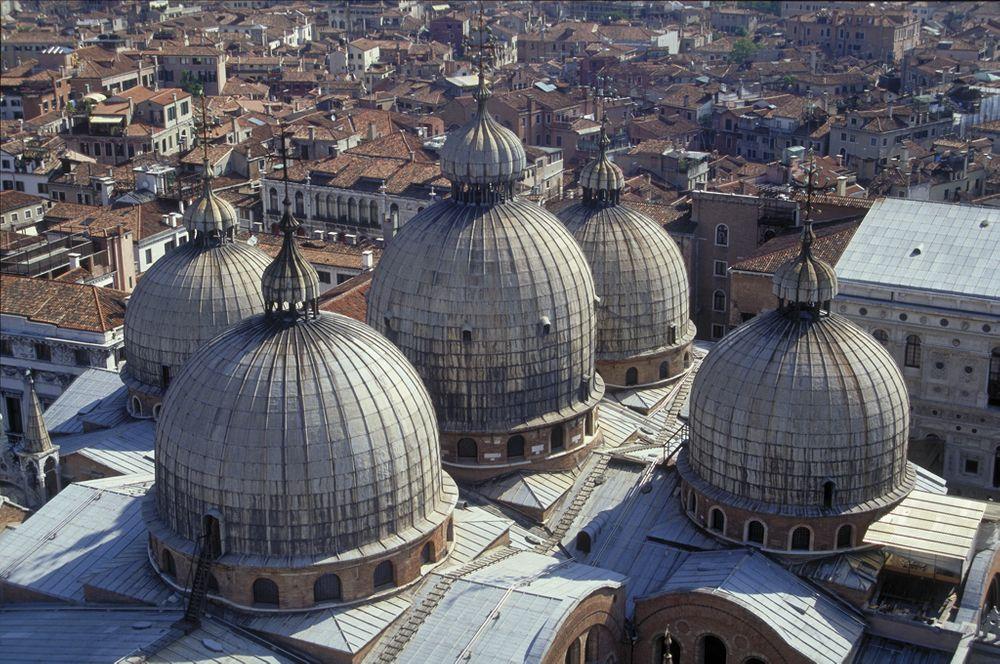World 🢖 Europe 🢖 Italy 🢖 Veneto
Churches 🢔 Religious architecture 🢔 Architectural wonders 🢔 Categories of wonders
Wonder
St Mark’s Basilica
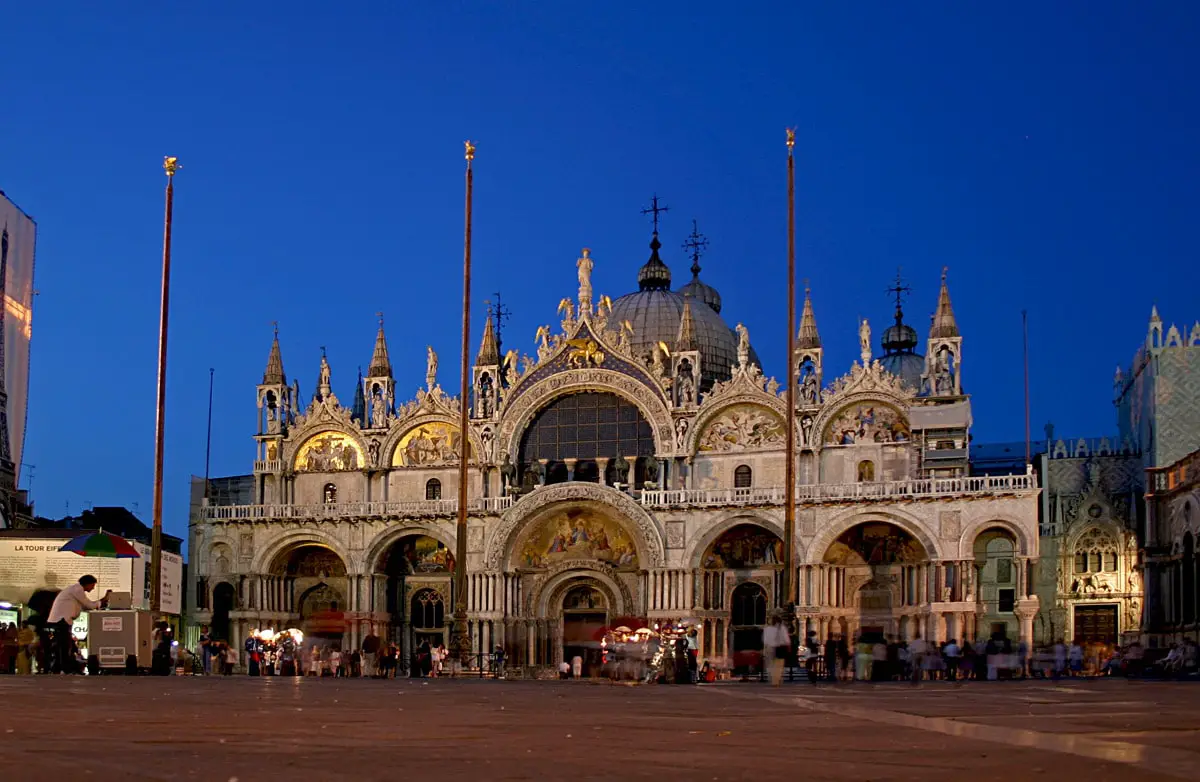
 In short
In short
At the time when the influence of Byzantine Empire was waning, in Venice started construction of new cathedral church which would represent the best of the former and the new, local art: St Mark’s Basilica. Now, this is one of the most splendid structures in the world.
 75.7%
75.7%
GPS coordinates
Full name
Alternate names
Name in Italian
Name in Venetian
UNESCO World Heritage status
Architectural style
Height
Year of construction
Branch of Christianity
Map of the site
If you see this after your page is loaded completely, leafletJS files are missing.
 In detail
In detail
History of St Mark’s Basilica
Beginnings of the magnificent Venice City
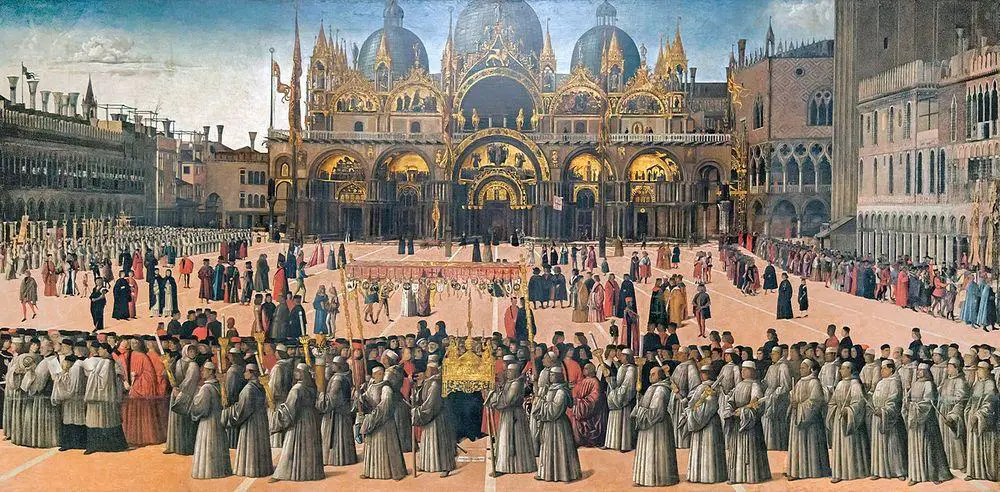
The history of St Mark’s Basilica started when Venice was one of the last outposts of the Byzantine Empire surrounded by the Carolingian Empire. The spirited grandee Agnello Participazio organized the defense of Venice against the Lombardian forces and was elected as the tenth doge of Venice in 811.
Participazio moved the capital of Venice from the present-day Malamocco on Lido island to Rialto in the center of present-day Venice – this island was easier to protect against the enemy forces. The development of present-day Venice started.
Story of Saint Mark
It seems, Saint Mark the Evangelist, contemporary of Jesus Christ and, possibly, the boy who lived in the house with Cenacle – the house where the Last Supper took place, during his life did not have anything to do with Venice or even present-day Italy. This learned man was sent by Jesus to spread his teachings in Judea and later wrote the Gospel of Mark – part of the present-day Bible. He founded the Christian Church in Africa, the Coptic Orthodox Church, and served as the first bishop of Alexandria.
He died as a martyr in 68 AD and his remains were in Alexandria, guarded by Coptic monks. Meanwhile Venice – the rising center of power – needed everything. It became richer but it needed influence over the minds.
Then, reportedly, happened the following:
The next doge Giustiniano Participazia – son of Agnello Participazio – approved a daring quest. Two Venetian merchants, Buono di Malamocco and Rustico di Torcello, were sent to a mission to Alexandria. They bribed the guards and stole the remnants of Saint Mark, hiding them among the pork. They brought it to Venice on January 31 828.
There was a need to have a representative shrine to hold these invaluable relics. Thus Giustiniano ordered to build a chapel dedicated to Saint Mark.
Timeline
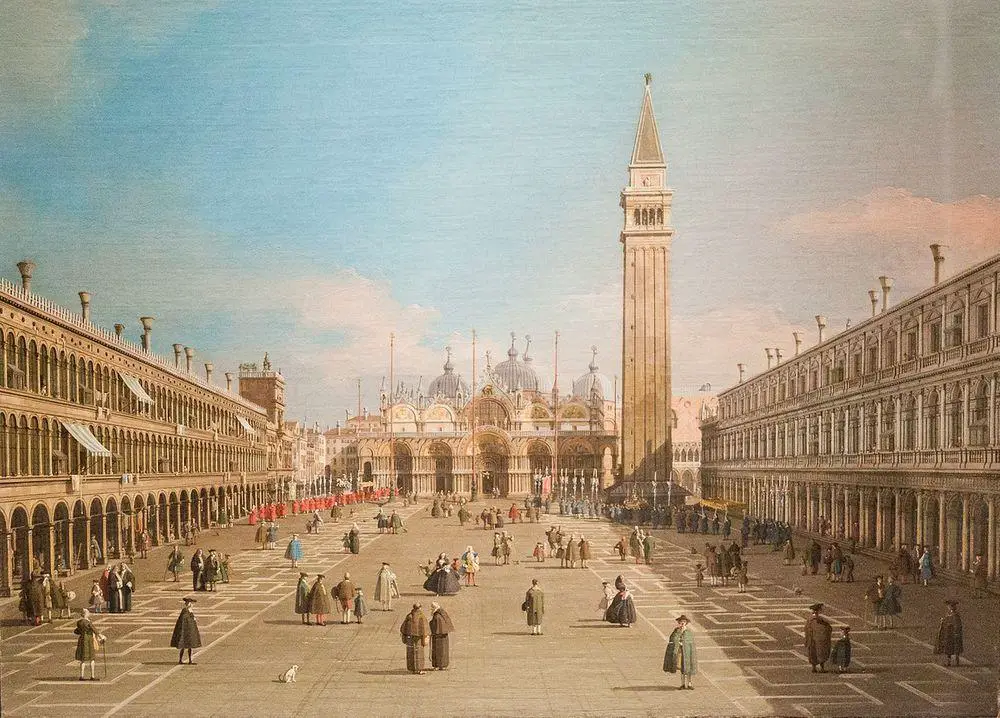
- 828 – Doge of Venice orders to build his chapel next to the new Doge’s Palace.
- 832 – first chapel completed.
- 830ies – the first St. Mark’s Campanile – bell tower – constructed.
- 976 – first chapel burned down during a rebellion.
- 978 – next chapel built.
- 1063 – 1094 – the present cathedral is built and consecrated.
- 1106 – remnants of a man, supposedly, the body of Saint Mark – were discovered in a pillar of the church.
- 1204 – after the siege and loot of Constantinople Venetians bring to Basilica many outstanding values of art.
- First half of the 13th century – the present-day facade and the narthex constructed, five domes rebuilt in their present form. Most of the mosaics completed inside.
- 13th century – the private Doge’s chapel gradually becomes a state church. St Mark’s Basilica becomes the place where the grand ceremonies of the Republic of Venice take place.
- 13th – 15th century – Deceased doges are buried inside the church until the space runs out.
- 13th – 19th century – Basilica becomes more and more opulent, there are added more and more embellishments, gold, jewels, works of art. The facade is covered with marble and intricate carvings.
- 1797, 1807 – end of the Venetian Republic. Upon the order of Napoleon Basilica becomes the seat of the Patriarch of Venice, archbishop of the Roman Catholic Archdiocese of Venice.
Design
St. Mark’s Basilica has bold and unusual planning – there are few buildings like it. It has a plan of a Greek cross (e.g. cross with equal length of arms) and has five large domes, which are made of wood and covered with 2-3 millimeters thick sheet of lead. The building is 76.5 m long and 62.5 m wide.
The church incorporates also a low tower which is believed to be a part of the original Doge’s Palace. Now it houses St. Mark’s Treasure.
Facade
The main facade has five enormous portals rising tall above the countless tourists in Piazza San Marco. Portals have round arches with bronze-fashioned doors. The sumptuous facade is adorned with mosaics depicting the scenes from the Life of Christ as well as the history of the relics of Saint Mark.
The roofline is adorned with many sculptures: the statue of Saint Mark stands in the center. Below this statue is a relief of a winged lion – the symbol of this saint as well as the symbol of Venice.
Triumphal Quadriga
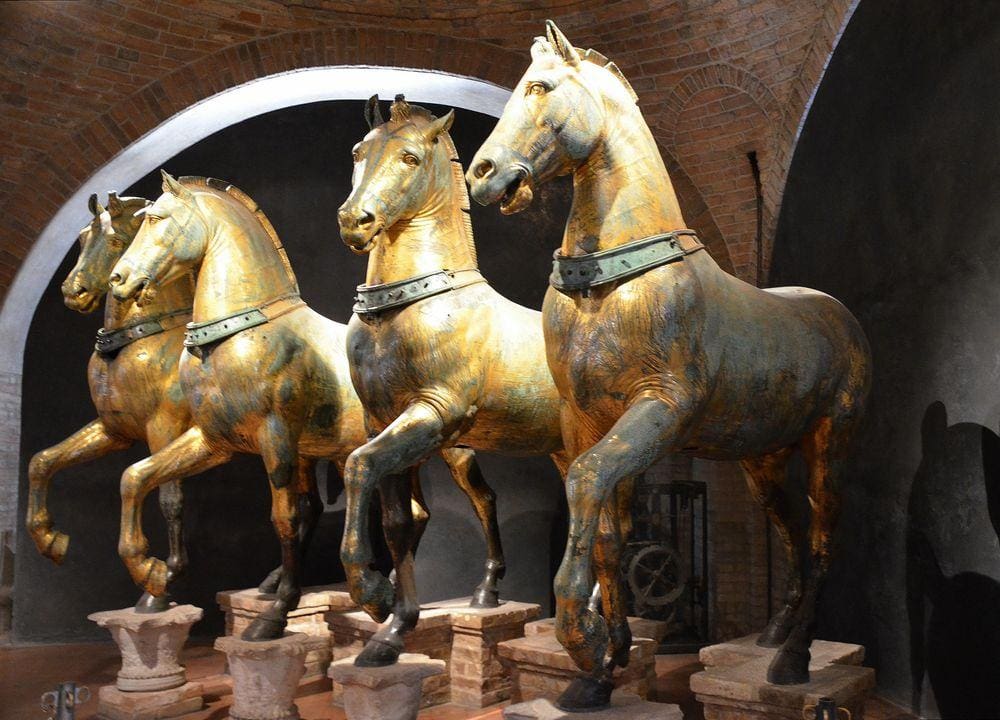
Above the main entrance are located replicas of one more, very special treasure of art – the Horses of Saint Mark (Triumphal Quadriga). The original horses are inside the church now.
Quadriga, most likely, was made in Roman times. These copper horses were brought to Venice after the sack of Constantinople in 1204. Collars of horses hide cuts – their heads were severed in order to make possible their transport.
Four Tetrarchs
One more loot from Constantinople is the porphyry sculpture of the Four Tetrarchs in the corner of the facade. It also is made in the times of Ancient Rome, around 300 AD, and shows the four rulers of the Roman Empire. This is an outstanding work of art – an early predecessor of medieval art.
Interior
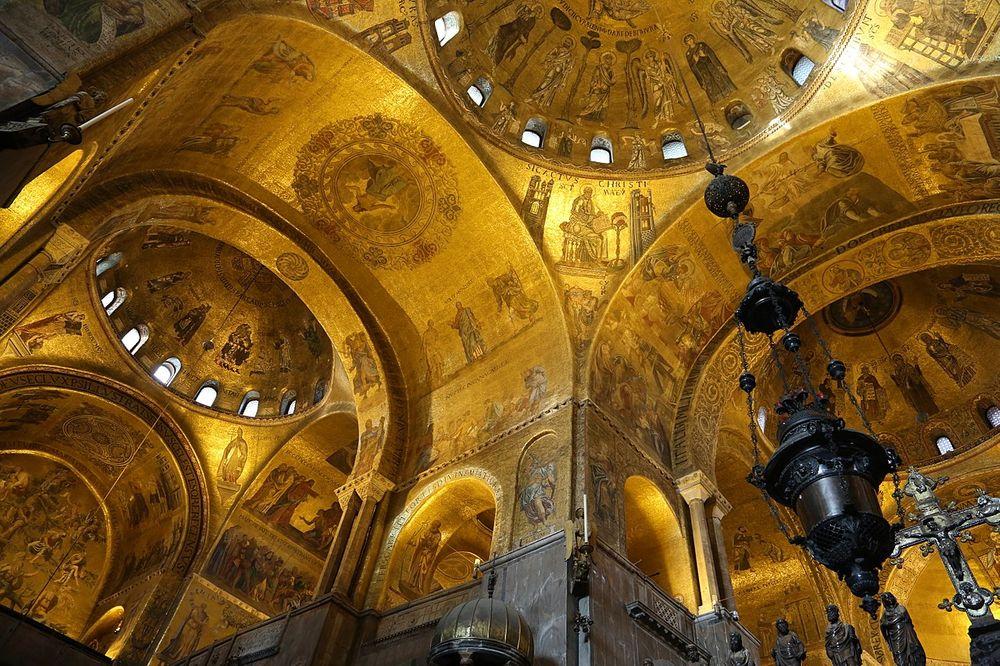
The most stunning feature of the interior is the golden mosaics which cover some 8000 m2. As a result, the interior shimmers and sparkles.
The oldest part is on the main porch and could be made around 1070. This early mosaic represents Byzantine art but by 1130 the mosaics were made already in a local, Italian style.
The interior was completed around the 1290ies. Later, when restorations were needed, the designs were made by many prominent artists – Paolo Uccello, Paolo Veronese, Titian, Jacopo Tintoretto, and others.
Unique work of Byzantine art is the high altar retable – Pala d’Oro. It is made of gold and more than 2000 precious stones and pearls. Originally made in 976 and expanded around 1105. In 1345 it was further expanded with a Gothic-style frame by the goldsmith Giovanni Paolo Bonesegna.
Inside the Basilica are numerous other works of art of international importance, many coming from exotic lands.
St Mark’s Basilica had an influence on music as well – here evolved Venetian polychoral style: several choirs were alternately singing in different places of the church. This music in the late 16th century was the precursor of the Baroque style in music.
This magnificent structure is a true paradise for lovers of art history – there are thousands of details to explore and contemplate.
References
- Basilica di San Marco. Accessed in the 17th December 2018
St Mark’s Basilica is included in the following list:
 Linked articles
Linked articles
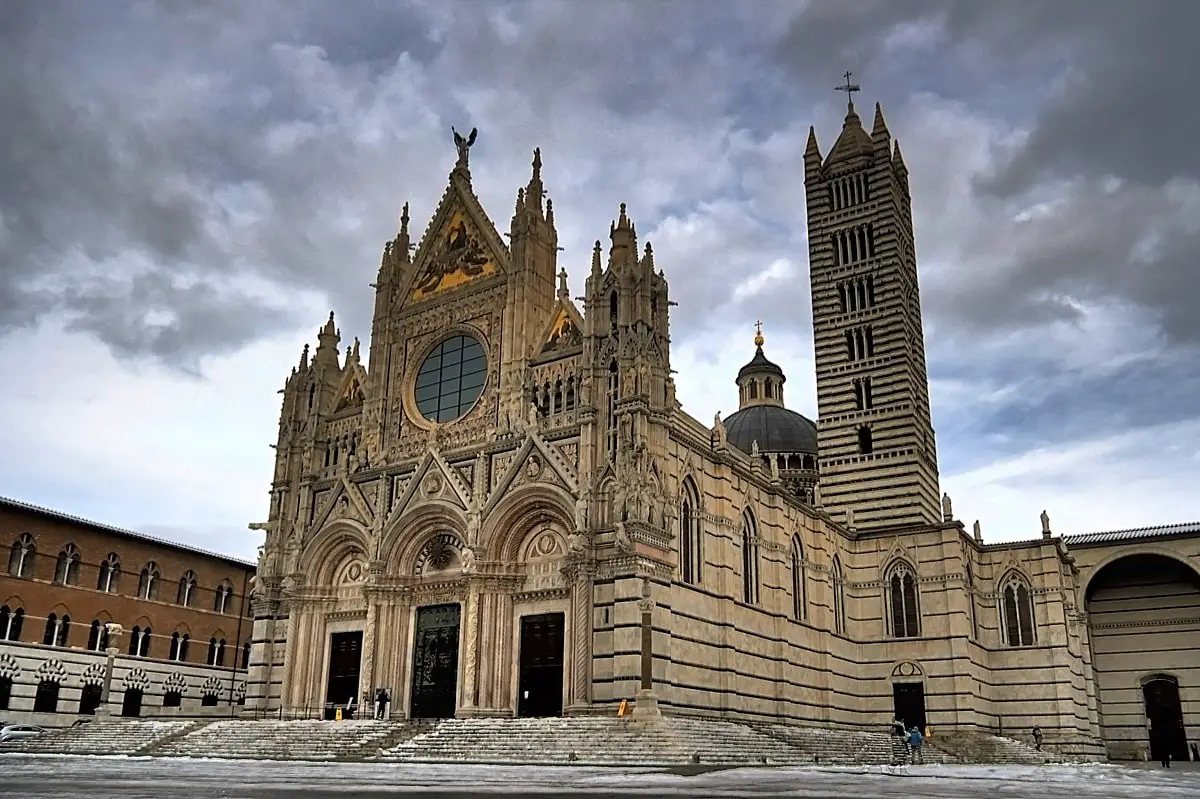
Top 10 most beautiful churches of Italy
This article lists the greatest churches of Italy: the best ones among the hundreds of very interesting buildings. Each of them has unusual and beautiful architecture, great works of art, and with an exciting history that sometimes is 2 thousand years long.
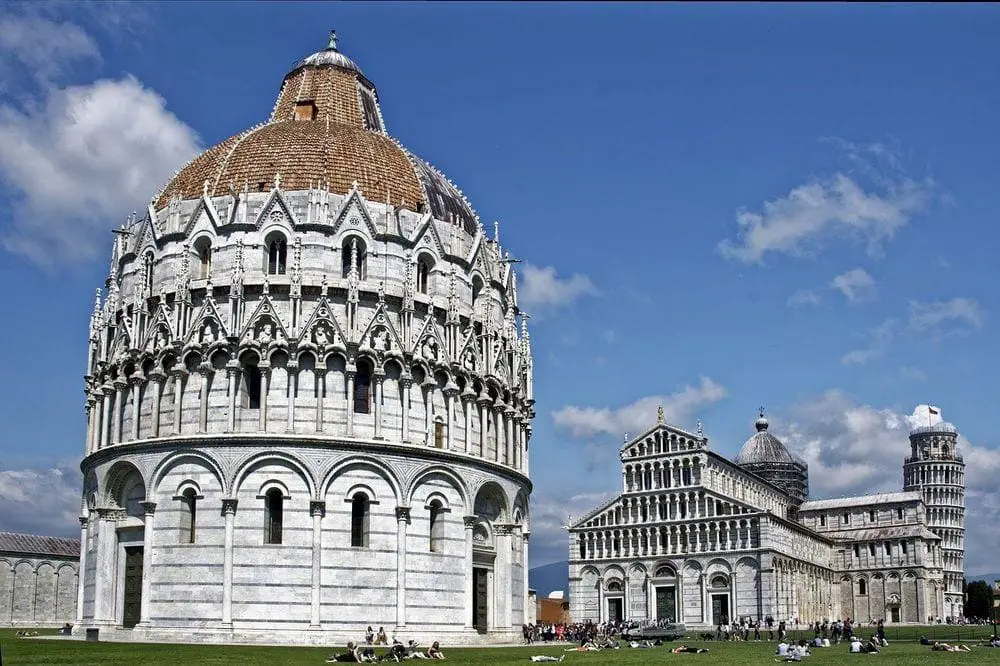
Wonders of Italy
Italy is one of the most popular destinations in the world due to its unsurpassed cultural heritage – this country has got some of the finest monuments of architecture and art in the world.
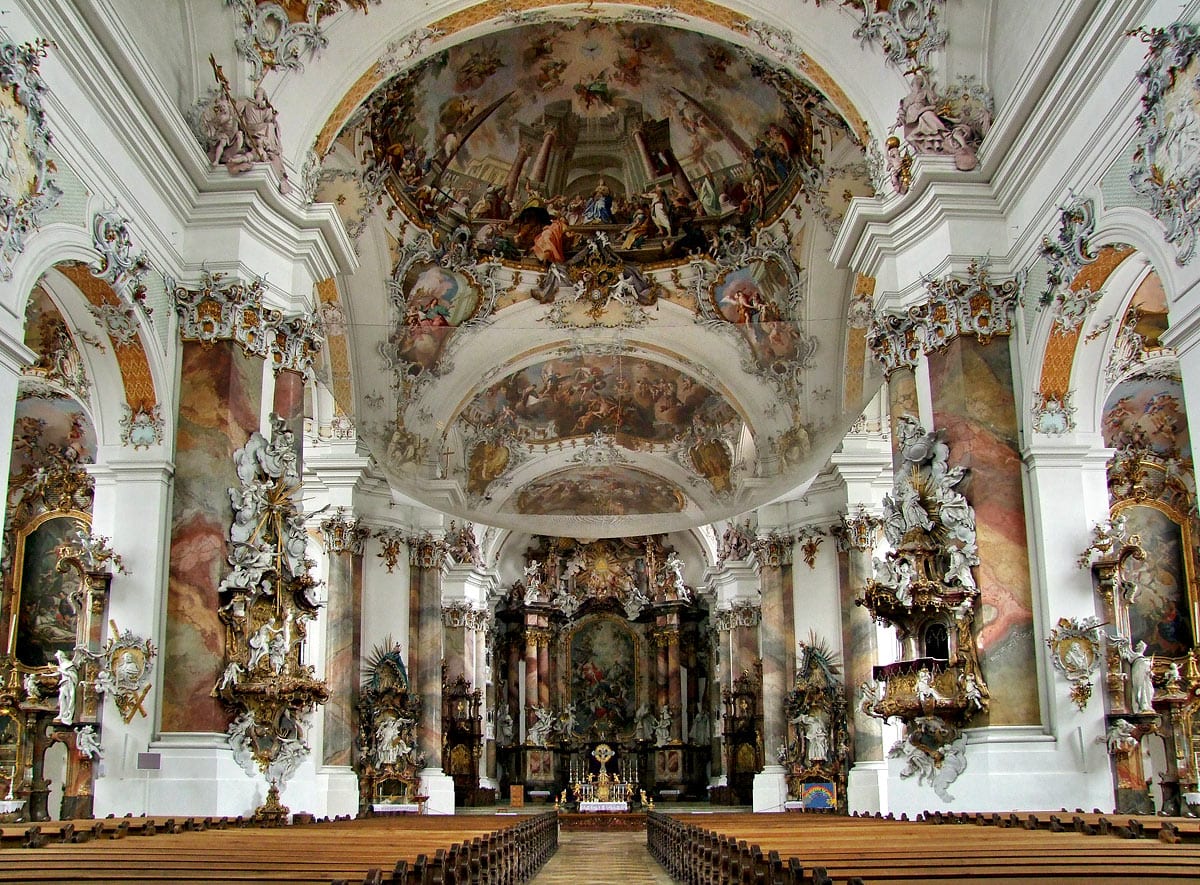
Churches
Throughout the millennia Christian churches have been the epitome of architecture and arts achievements in Western culture.
 Recommended books
Recommended books
San Marco, Byzantium, and the Myths of Venice
The church of San Marco of Venice has long played a central role in Venetian political, ceremonial, and religious life. Its renowned assemblage of mosaics, sculpture, metalwork, and reliquaries are, in origin, Roman, Byzantine, Venetian, or Venetian imitation of Byzantine designs. In San Marco, Byzantium, and the Myths of Venice, the authors assess the significance of the embellishment of the church and its immediate surroundings, especially during the thirteenth and fourteenth centuries, when most of the Byzantine material was acquired, largely from Constantinople.
The Genius of Venice: Piazza San Marco and the Making of the Republic
An ideal volume for lovers of Venice and architecture aficionados, The Genius of Venice presents the unique history of Venice through the story of the Piazza San Marco and its development over eight centuries. It combines an authoritative account of the entire Piazza complex, the oldest, most important, and most evocative public space in this singular city, with more than 100 color photographs and maps.

